|
Based on the title of this article, you will be quickly reminded that owning a pet is not always glamorous! Purging and the ability to purge, either through vomiting or diarrhea, is very imperative, in fact, if purging is discouraged, it may impact your pets overall health and vitality. So, why would your pet purge or want to purge? Purging is a quick way of your dog or cat getting rid of something in the body that doesn’t belong, it can either be hidden toxins or chemicals, incompatible foods, hair balls and miscellaneous objects. Purging is also a useful mechanism to discharge the body of any internal parasites, bacteria, and infections. If it is an infection, the expelled product will look like a ‘whitish’ froth. If it is a thick, mucous substance that usually indicates that it has been coating harmful chemicals that have remained undigested in the gut. The more toxic a pet is, the more will come out, and as I always say, “better out than in!”. Self-Purge Sometimes a dog or cat will want to self-purge, this is followed by them selecting specific ‘remedies’ to help utilize them to purge. This can often be seen when they eat grass when they are outside, and it may take several days for them to purge everything out, from both ends. But how about when it is winter and there is no access to grass? You can actually offer your pet natural ‘remedies’, where if they select it (self-selection), it means they are wanting and needing to purge. You will know if your pet is selecting a remedy to purge versus simply wanting is as a snack by them taking in large amounts of whatever it is you offer. Coconut oil is a great remedy to help your pet purge, it is often selected to help detach mucous, as many toxic chemicals don’t pass through the gut, so instead the body will produce mucus to coat and to protect itself. Foreign objects like wood and even stones can pass through by purging this way. If your pet suffers from pancreatitis, I would caution against using coconut or any oils for purging purposes. Other helpful ‘remedies’ are; spirulina, wheatgrass, and barley grass. When it comes to purging, sometimes a condition can get worse before it will get better, and be prepared when after you offer these remedies, as things will of course come out, so be prepared.
Case study: A beautiful long haired cat named Molly, who grooms herself as a good cat should. There will be odd periods of time where it looks like she is actually coming down with something, only to severely improve after she purges all the hair balls out. If there is ever a delay in the purging process, it appears that her immune system will get temporarily compromised. That is why purging is so important, as it is the body’s’ way of making sure that the toxin load in the body stays to a minimal amount. If your pet is not in need of purging, then they will not select any of the remedies listed, or at least not in significant quantities.
0 Comments
Eggs are one of nature’s most wonderful little power houses of nutrition, both for us and our beloved pets. Nutrition: Whether it be chicken, quail or even duck, eggs are packed full of bioavailable nutrition, such as;
You might notice and recognize some of these nutrients as supplements, and you would be absolutely correct- that’s how nutrient dense eggs are! Source: Now that being said, not all eggs are created equal, and I would know, being a farmer myself. When you buy eggs that are from say, chickens who are kept indoors 24/7, caged and stressed, you better believe that will transfer to the egg, same goes with feed. If the chickens are fed a GMO and pesticide laden feed, then the pesticides will make its way to the egg. Similarly with us, a pregnant woman has to be very mindful the moment she finds out that she is pregnant, what products, herbs, and even essential oils she can topically use or not, because it will make its way to the baby. You’re going to want to look for eggs that came from ‘happy’ chickens, who are free to roam and range, and this is where most people I find don’t ask- but ask the farmer what they feed the birds, whether its chickens, quail, or duck and geese- it will make all the difference in the world. Everyone advertises ‘Farm Fresh Eggs’, and yes of course, every egg comes from a farm (there are no city eggs), but how the chickens are raised, and what they are raised on should be on every egg buyers’ mind. How to feed/prepare eggs to your pets:
Now, You can feed eggs to your pets a number of ways, the best way of course is raw, but if your pet can’t tolerate raw eggs, then the next method is to lightly cook it, where the egg is still a bit liquid or raw-like, not solid all the way. Poaching is also a good way to feed eggs to your dogs and cats. Make sure though, that however you do feed eggs, to keep the yolk whole, as that is the best way to keep the nutrients intact, scrambling will alter and deteriorate the nutrient profile of the egg. Also, be sure to be mindful of calories, when you do treat your pet to a fresh egg, be sure to cut back on their regular food a bit, as to not overfeed. The average range to feed your pet an egg is 1-3x/week, of course this is a guideline, and you should ultimately do what works best for your pet. Author’s tip: Don’t forget about the shells! They are packed with bioavailable minerals and other nutritious components you won’t want your pet to miss out on! Recipe #1: No-bake Pumpkin Kefir bites There are so many wonderful benefits to feeding pumpkin to your pets! This recipe is particularly good because, not only is your pet getting some prebiotics (from the pumpkin) but they are getting probiotics as well (from the kefir), this is a symbiotic happy and healthy pet treat that your pets are just going to love! You will need: -pureed organic pumpkin 500 mL -kefir (either from coconut, goat or sheep) 500 mL -cinnamon ( a pinch) Blend all ingredients together, pour into molds or ice cube trays, freeze overnight, and viola! Probably the most nutritious and easiest recipe ever! Recipe# 2: Pumpkin Biscuits This is a biscuit treat recipe that again, is saturated with nutrition, and is gluten free to boot! You will need: -1 cup coconut flour -1 tsp honey - 1 can of pumpkin puree -cinnamon Preheat oven to 350 degrees. Blend wet ingredients first, then add flour, roll out with dough roller, and cut into bone shapes with mold. Bake for 10-12 min. Allow to cool before serving. Recipe #3: Pumpkin Turmeric Muffins
These hearty muffins will be sure to please any dog (even cat- yes my cats love these! No one clued them in on the ‘obligate’ carnivore part ;)). They should last 1 week in the fridge. You will need:
Pour into muffin trays or cupcake molds and bake for 15 min. “The splitting of the atom”, said Einstein, “changed everything except man’s mode of thinking”. Before we define medicine, let us define disease; “A disorder of mind or body marked by definite symptoms; illness; sickness.”(Holt, 1970). “All disease reactions are biologically goal oriented and thus serve in the detoxification of the system and in the repair of toxin-caused damage”. –Dr. Hans-Heinrich Reckeweg 1905-1985. Whether one knows it or not, we are living in an extra ordinary time. For such a time as this, I have made it my own personal conquest to look back at time in history, and see which medicinal modalities were established when. Natural medicine works with the body’s natural healing processes, it provides the immune system with the ingredient it needs necessary to heal itself, or removes the ‘obstacle’ for the body to cure itself. It does not work as quickly as westernized pharmaceutical medications and may sometimes be hard to find. Pharmaceutical drugs: The first synthetic pharmaceutical drug was discovered in 1804, by a German scientist, Friedrich Serturner. The main active chemical in opium was extracted in his lab and was named morphine, after the Greek god of sleep. Chemo and Radiation therapy: First developed and began to be used in the 1940’s with the first use of nitrogen mustards and folic acid antagonist medications. Nutraceuticals: The technical definition for nutraceuticals would be natural substances that have a physiological effect on the body, and may be used to improve health, slow down aging, prevent chronic diseases, increase life span, and support the structure and function of the body. Dr. Stephen DeFelice coined the term ‘nutraceutical’ from ‘nutrition’ and ‘pharmaceutical’ in 1989. The history of the modern vitamin officially began in 1916, it began with the development of Mastin’s Yeast Vitamon Tablet. Perhaps the most prominent of diseases in disease history was that of scurvy, a simple vitamin C deficiency, supposedly began when the process of milk sterilization came into play, the heat from the sterilization destroyed the vitamin C content in the milk. Homeopathy: Discovered in 1796 by the medical doctor Samuel Hahnemann (1755-1843) from Germany, the longest established medicine to come out of Europe. Hahnemann’s definition of disease is, “A blockage of some sort between the Spirit and the Form”, and ‘Obstacles to Cure”. Homeopathy belongs to the field of quantum physics and not chemistry, as it is made of super diluted ingredients (either plant, animal or mineral source), where it is diluted to the point (beyond the 12th dilution) where no chemist will find a single molecule of the active substance in the preparation, it has disappeared leaving only a white luminous hole of brilliant white light. This white light is a dematerialization of the substance, which was once only physical. Gemmotherapy: Falling under the umbrella of phytoembryotherapy, gemmotherapy utilizes the extracts of the young developing buds of plants and the young shoots, where the life essence is at its peak. Primary studies were first done in the 1950’s by Belgian homeopath Dr. Pol Henry, the first research and clinical trials were published in 1970, and was called ‘Phytembryotherapy’, but it was then further developed by Max Tetau, who coined it ‘Gemmotherapy’. This highly therapeutic form of medicine is made by using the freshly harvested buds of plants that contains constituents rich in embryonic ingredients rich in Gibberelins (plant hormone). Gemmotherapy provides drainage on the cellular level to remove toxins from the body and to allow the body to then heal itself. Herbology: The oldest and most common form of medicine, archeological studies have shown the practise of plant herbal medicine as far back as 60,000 years ago and from all around the world, from Iraq to China. Under this umbrella we have; Ayurveda: Indian based medicine more than 5000 years old, Ayurveda is a natural system of medicine that divides the body into 5 classical elements termed ‘dosha’, which are; earth, water, fire, air and earth. The medicinal herbs and components are picked based on which ‘dosha’ one is. “Each dosha has particular attributes and roles within the body and mind; the natural predominance of one or more doshas thus explains a person's physical constitution (prakriti) and personality”. (Alternative Theories in Health and Medicine, 2001). Predominantly plant based remedies (about 90%), plant treatments may be derived from roots, leaves, bark, fruit, or seeds, such as cardamom, turmeric root, cinnamon and ashwagandha. Traditional Chinese Medicine (TCM): Another ancient medicinal modality, TCM like Ayurveda uses specific herbal practices and specific herbs for its use, along with other healing modalities in and of itself, such as acupuncture. “TCM is said to be based on Compendium of Materia Medica and Huangdi Neijing and includes various forms of herbal medicine, acupuncture, cupping therapy, gua sha, massage (tui na), bonesetter (die-da), exercise (qigong), and dietary therapy. TCM is widely used in the Sinosphere. One of the basic tenets is that the body's vital energy (ch'i or qi) is circulating through channels called meridians having branches connected to bodily organs and functions.”(Barrett S, January 2011). As you can see, all these different medicinal modalities work very differently in the body, from the physical level to the energetic level. There is more than one path to Rome. Each modality of medicine has its place in our hectic world and lifestyle. I also would like to point out that we are in a very different time than our ancestors ever were, including our pets, with more than 250,000 chemicals lurking in our environment, seeping into our water supplies and even the air we breathe, we are practically becoming radioactive specimens!
Our pets not only have to deal with environmental toxins, but are also exposed to toxins via flea and tick medications, vaccines, and other concentrated forms of toxins. I will conclude by stating that it is up to the individual and their trusted physician/ practitioner/ holistic vet to decide which medicinal modality is right for them and their pet, the more open minded we are with the right discernment, the more opportunities we give ourselves and our beloved pets to discover health in new ways. With the big ‘C’ being the disease that diagnosis one out of every two pets, we as pet guardians must be seeing the trend. The interrelationships between elements of the immune system, the environment and other biological processes is something to note. Of course, epigenetics and nutrigenomics play a major key role, but something that I feel is extremely overlooked in the pet industry is how well our pets actually detoxify toxins. Prescription and flea/tick medications, as well as vaccines are prescribed without even so much as any kind of liver or lymphatic support. These are all VERY taxing on the immune system. Pair that with a processed diet, and of course cancer rates are 1 in 2! Case in point: “This case study was on a 6 year old, mixed breed, spayed female dog with suspected acute liver toxicity secondary to Trazodone administration. Trazodone had been prescribed to this particular dog intermittently previously for separation anxiety, but the dog had an event of raisin ingestion and needed ongoing medical care. Due to the anxiety of ongoing care, they were administering Trazodone at least 5 out of 7 days. Initial treatment for the raisin ingestion included induced vomiting, fluids, and charcoal. Bloodwork was done 48 hours later and the ALT (a liver enzyme) was elevated. Four doses of Trazodone were given during that 48 hour period. The dog was then hospitalized for fluid therapy and monitoring. They rechecked the bloodwork after another 48 hours passed and the dog's ALT was even higher. Since the dog wasn't exhibiting signs of liver failure, they discharged the dog and sent her home on liver support supplements. The next day, they checked bloodwork again and the ALT was still climbing higher. 3 weeks after initial admission, the ALT was still elevated, the GGT (another liver enzyme) mildly increased, and the dog tested negative for leptospirosis. 4 weeks after the raisin ingestion, the ALT went up to 996 (normal is up to 125) and the other liver enzymes (GGT, ALP, and AST) were all elevated. 6 weeks after presentation, the ALT was 1177, and an ultrasound guided biopsy of the liver was performed which was non-specific. The Trazodone was discontinued due to concern of possible liver toxicity. 2 weeks after stopping the Trazodone, the liver enzymes returned to normal. Though the probability of liver toxicity from sporadic use of Trazodone (during fireworks, thunderstorms, a long journey) is low, this is an important lesson that consistent monitoring for pets on medications is important. Thankfully, they were doing bloodwork on this dog regularly, otherwise continued use of Trazodone could've resulted in a much worse outcome. I recommend all pets that are on long term medications get lab work every 3 months, but talk to your veterinarian about potential side effects of medications and how to best monitor your pet.” Dr. Judy Morgan, DVM. The way in which our pets detox is extremely overlooked even in the holistic health community, and sure, detoxification happens daily, and our detoxification organs are equipped to do that, but how well they detox on a much deeper level is another story, with ‘obstacles to cure’, such as mycotoxins, homotoxins, mycoplasmas, etc. The Lymphatic system is a very imperative detoxifying organ, it is the only way out for most homotoxins, has interactions with the ECM (Extra-cellular matrix), gut, liver and kidney, and is the only way out for most toxins. Remember, the body is a flow-system, so making sure the lymphatic drainage is working properly is key to always getting the root of a problem. Diseases have a very distinct progression, and the right lymphatic drainage protocol for the right stage of the disease must be ensured. Yeast overgrowth is so common it’s scary, a sure tale sign that there is toxin overload in the body. There have been medical links to cancer and candida, the book ‘Cancer is a Fungus’, by oncologist Dr. Tulilo Simonoini MD, states that cancer can only develop when there is a candida or fungal pattern. To me, that basically once again boils down to the bodys’ ability, or rather inability, to detox well. Having a high toxin load will also interfere with your pets’ anti-aging pathways, the activation of key anti-aging molecules known as silent information regulators (SIR) act across multiple cellular pathways that regulate gene expression, aging, DNA repair, metabolism and apoptosis (damaged cell death). Which makes it a lot harder for the body to do when it is laden with a heavy toxin load. Which begs the question, do pets with a lighter toxin load live much longer? So, here are a few of my tips to help insure your pets’ toxin overload is minimal and is also backed my recent clinical research:
What we personally love:
If you want a more tailored approach to your pet’s detox regimen, to remove toxins effectively without causing further inflammation and damage then contact us for more information and to book a consultation, we all metabolize and process toxins differently and no two dogs or cats are alike. One of the dreaded parts of pet ownership is dealing with pesky ecto and endo parasites that can rage war on our pets’ health- and yes, they are very real! Although treatment of parasites is quite a different topic and story, I’m going to give you a few ways to incorporate taking a parasitic load off your pets, and even deter a heavy load in the first place. It is true that germs are attracted to their terrain, so the real question should be on every pet guardians’ mind- ‘How can I get my pets health to the point and place where they don’t attract parasites?’
There is also a reason why in commercially prepared raw pet food you won’t find any intestines of the animal, most but not all parasites are found there. Make sure the raw pet food you buy is from a reputable source, and preferably not sold in bulk format. Carnivores such as felines and canines have (or supposed to have) a very acidic digestive tract, this will ensure that whatever raw food they eat, will be broken down properly, and to rid of any unwanted bacteria or parasites. In fact, feeding a diet that is high in starches and carbohydrates actually buffer the acidity in the digestive tract, thus changing the pH to making it less acidic, where more bacteria and parasites can be present and flourish. In fact, parasites love sugar, and that is what the body converts carbohydrates into, sugar (glucose) in the bloodstream! Most kibble is made up of anywhere between 40-55% carbohydrates, which is very high in sugar content, making everything you don’t want to grow, grow. 2. The gut: Probiotics & enzymes: Surprised that I bring up the gut again? It really is central to whole body health, both for them and for us. 80% of the immune system is in the gut. Supplementing with these is a must to ensure your pet is equipped to deal with and handle parasites, we always want the good bacteria to outweigh the bad, and the enzymes are a catalyst for so many important functions in the body, including making the digestive tract functioning properly, and even potentially killing and properly eliminating worms. 3. Herbs & botanicals: a) Black Cumin Seed oil (nigella sativa) This miraculous and highly therapeutic oil is great for literally dozens of ailments, but why it made its way in this blog post is because of its evident anti-parasitic properties. Below is the finding evidence based on a 2019 study; “Nigella sativa seeds have shown schistosomicidal properties against Schistosoma mansoni (in vitro), through a strong biocidal effect against all stages of the parasite and an inhibitory effect on egg-laying of adult female worms [119, 120]. An ointment of N. sativa seed significantly contracted and inhibited the inflammatory reactions to cutaneous leishmaniasis produced experimentally in mice by a subcutaneous inoculation of Leishmania major at the abaxial base of the tail [121]. N. sativa extract at a dose of 1.25 g/kg prominently lowered Plasmodium yoelii infection in mice by 94%; however, the effect of chloroquine was only 86% as compared to the untreated group. In addition, methanolic extract of N. sativa revealed higher parasite clearance and restoration of altered biochemical indicators by P. yoelii infection than chloroquine [122]. Thus, considering N. sativa for future antiparasitic agents will have a very important input after conduction of further investigation of its curative, prophylactic and chemopreventive activity particularly in the era of emerging antimalarial drug resistance.” Along with having anti-parasitic properties, Black Cumin Seed oil also has strong anti-viral, anti-microbial, anti-fungal, anti-bacterial and anti-cancerous properties, and there are countless studies proving its benefits for overall health, including but not limited to; digestive health, respiratory health (great for allergies), hepatoprotective, cardiovascular health, metabolic health, and so much more. b) Garlic: Another very old remedy for parasites, garlic is a great staple to incorporate once in a while in your pets’ cuisines, to help ward of any unwanted bugs, and to keep their internal environment inhospitable to worms and parasites. A natural anti-biotic, the active component in garlic is allicin. Allicin has been very extensively studied over the years, proving to treat various kinds of drug resistant bacterial infections, as well as treating fungal and viral infections. Due to its antihelminthic properties, garlic has shown to evoke a significant amount of worm load reduction. It also works great from the inside out to ward off any pesky fleas and ticks! 4. Diatomaceous Earth- D.E: D.E is a white powder you can sprinkle in your pets’ food, and this works in a mechanical way to help rid of internal and external parasites. What it actually is is fossilized remains of diatoms, which are very tiny aquatic organisms, their skeletons are made up of silica. How it works is that once insects come into contact with it (both externally and internally) they literally dry out and die. The sharp edges of the microscopic silica speed up the process. Incorporating D.E in your pets’ diet once or twice a season is one way to keep unwanted parasites at bay and keeping from thriving. Feel free to contact us for more information on any of the mentioned above! Dosing will vary per pet and situation. Always consult with your vet prior to introducing anything new to your pet.
Probably the most influential system for the whole entire body, our microbiome (including our pets’ microbiome) is such a critical component for whole body health and here is why: What it does:
Areas of microbial concentration in the body:
There is an exogenous and an endogenous microbiome, and the exogenous (external) affects the endogenous (internal) microbiome. What affects the microbiome? There are several key factors that affect the microbiome, such as;
Once we understand how and what exactly the microbiome affects, I feel we all would be paying a lot more attention to our pets’ microbiomes and even ours, here are some benefits of a healthy gut microbiome:
Whenever our beloved pets suffer from any kind of issues, you can be sure that there is an imbalance between the good anti-inflammatory bacteria and the bad pro-inflammatory bacteria. Did you know there are anti-tumoral and pro-tumoral strains of bacteria? That’s right, there are strains that discourage tumor proliferation and there are bacteria strains that encourage it. Some anti-tumoral strains are; lactobacillus casei, propionibacteria, gut bacteria spp. Some pro-tumoral strains are; esherichia coli, shigella flexneri, fusobacterium nucleatrum, etc. What To Do It is so important to feed the gut in many ways, not just to diversify it, but to get the effects of ‘post-biotics’, which is the aftermath after a probiotic strain has colonized in the gut, and the wonderful after effects it has in the gut. There are ways to help feed the gut, and there are also ways to diversify it. We at Thrive4life Holistic Pet will help you choose the best route to take to help feed, nourish and balance your pet’s gut to further gain the benefits of proper immune function and health. Healing the gut can help with allergies, food sensitivities, detoxification and so much more! We carry the best pre- and probiotics in the entire market that we proudly offer to our loyal customers, and make suggestions along the way based on the dog or cats’ individual needs. Click here for out gut reset recipe that is a hit with our customers! Photo courtesy of animal biome.
#businesstalk This post is going to be a different one…
Did you know? That we give part of our proceeds back to organizations that effect our beloved community and the welfare of animals in other countries?... …areas in countries where they think shooting an animal for fun is OK, or that hitting a dog with your car is no big deal. That is where out proceeds go. These are situations that YOU are indirectly helping, now that you know that, that must feel good knowing that you are part of a greater cause. Click here to learn more. So, why am I telling you this? To show I’m a ‘good’ person? No. I am telling you this so that you know WHERE your money is going after doing business with us. So, why is this important? A lot is happening in the world right now, and with that being said, do you want to know what the #1 issue is? It shocked me when I found out. CHILD TRAFFICING This post is to educate you guys on knowing how and where to spend your hard earned dough, which companies to support and why. KNOW whose pockets your cashola is going to, because we as a society are ignorantly and indirectly supporting the wrong people. How do I know this? Because human trafficking is over a BILLION dollar industry, yes, that’s right, capital ‘B’. Do you know who owns big giant conglomerates and corporations? Can you actually name them? See what I mean, you are supporting companies and brands that you do not personally know. My new goal has been to support businesses where I know the owners on first name basis. Full disclosure: Over this past year I have changed the way I do business, I have become very methodical on where I spend my hard earned money, and did you know that I used to be a Starbucks fan? Yup, I used to hit up Starbucks almost on a weekly basis, unknowingly supporting a corporation owned by a multi trillion dollar chemical company, that’s right, I was putting chemicals in my body on a regular basis that messed with my hormones and overall health. Not so good. KNOW who you are supporting, if not on a first name basis then do your homework and research, get a little inconvenienced about it, it just might lead you down a much more meaningful path. We can all make a positive impact in this world, either in big ways or small, but just knowing you are being a little bit more #businessconscience, will make a world of a difference both on the inside and out. Click below to watch the video: https://www.instagram.com/tv/CDRUF_uHnfh/?utm_source=ig_web_copy_link The recipe is perfect for:
This recipe is appropriate for kibble, raw and cooked fed pets. It is not a balanced recipe to be fed daily, however, it is packed with nutrition and gut loving ingredients, and even though it does not have any meat, it is very high in protein. Recipes contains: Quinoa; Is in the amaranth family, it is gluten-free and contains high amounts of protein as it contains all of the essential amino acids. Quinoa is also easy to digest and is hypo-allergenic. It is high in fiber (which acts as a prebiotic in the gut), B-vitamins and minerals such as magnesium, phosphorus and manganese. Just like rice, always rinse your quinoa before cooking it, both for you and your pets. Kefir: Specifically coconut milk kefir that we carry, as it is fermented coconut milk using kefir grains (probiotic), kefir is actually a symbiotic as it contains both pre and probiotics. It helps to soothe and balance the gut. Sea vegetables: Including spirulina, chlorella, AFA (E3) Live algae, these are all super potent phytonutrients that help support whole body health. They are nutritive, healing and detoxifying all at the same time. Dosing will vary per pet by body weight. Ask us for our sea vegetable complex (yes we ship!). Egg (optional): The perfect protein, so long as it is both free range and free run, and the chickens are fed their ‘species appropriate diet’, you can choose to either feed it raw or slightly poached. The free-range eggs from our chickens are more nutritionally dense than other farm eggs, as our chickens are both pasture raised and fed a non-GMO diet that is both corn and soy free. Eggs are also a natural source of PEA (Palmitolylethanolamide) an antioxidant and health molecule that works through the endocannabinoid system and is responsible for maintaining overall cellular health and homeostasis. Click here to place your order on any of these products (must be local for egg-delivery).
Feed the normal amount you would normally feed your pet(s) of whatever diet they are on, if unsure of the amount then I would recommend a weight scale. The ingredients in this recipe are easy to digest (hence the name), meaning they are not as calorie dense as a normal diet, so it will be easier on the stomach. Please note this recipe is not to be fed daily, 7 times per week. When we normally think about our pets aging, we tend to mostly think about joint care and health, while neglecting cognitive health until we see some changes. The brain is part of the central nervous system, it plays a critical role in everything we do. Without it, we would all be a bunch of vegetables lying around, so it is very imperative we take extra good care of our brains and something to keep in mind for our pets as well, as they do go through the same things as we do, and cognitive health and aging is no exception. So, what is brain aging in pets? Well, just like us our beloved pets experience and develop age-related physiological deficiencies such as heart, liver and kidney disease, arthritis and vision impairment. The brain is no exception, and it can impact everyday activities. Another thing we must consider asking is, what is actually impacting cognitive function in our pets-is it just the aging process? Pesticides, herbicides, heavy metals such as mercury (thimerosal) in vaccines, and medications can impact our beloved pets’ central nervous system, pair that with poor nutrition and we can most certainly start seeing its detrimental effects. As I always say, they are already aging at a rapid pace (see age chart below), let us not mistakenly add to that burden. Percentage of dogs in each age group that are impaired by brain aging: 28%- 11-12 year old dogs 68%- 15-16 year old dogs Cognitive Health Declining is Identifiable Even thought the signs can be subtle at first, brain aging is a progressive process and the signs are likely to get worse over time. You can help your pet(s) live a long and healthy life as soon as you identify the behavior and take a plan of action. While every pet is different, a number of signs associated with brain aging/ impairment can be observed at home. Monitor your pet with these signs and symptoms;
Before we move on to things we can consider giving, let us look at things to absolutely avoid giving, things that will impair brain health, such as; high glycemic carbohydrates, gluten, flea and tick medication, over-vaccinating (consider tittering instead), rancid fats and exposure to chemicals. Here are some things to consider supplementing your pet(s) with, that is both natural and highly researched to support their cognitive health, it is also advisable to incorporate some of these to a healthy adult pet as a wonderful preventative, as the old saying goes, 'An ounce of prevention is worth a pound of cure'. Milk Thistle Milk thistle is traditionally known for its liver protective properties, but it simply does so much more that that. Not only promising as a cancer preventative, but the benefits of milk thistle also prevents impairment of both short-term and recognition memory. In a study conducted with mice, where they were injected with a highly toxic peptide fragment (also present in Alzheimer’s disease), which exerts neurotoxic properties and induces cognitive dysfunction, causing learning and memory impairment, the findings were that giving milk thistle actually prevented cognitive impairment. Milk thistle works as a super antioxidant, particularly protecting the hippocampus (part of the brain associated with memory) against oxidative damage caused by powerful neurotoxins. In the study, milk thistle also improved behavior abnormalities, including decreasing anxiety. There is also strong evidence supporting that milk thistle can potentially prevent Alzheimer’s disease. Milk thistle also promotes DNA methylation, and we will touch more on that in a little bit. Phosphatidylserine Phospha- whaa? Phosphatidylserine is a phospholipid, which is a class of lipids (fats) that makes up a major part of cell membranes, but it is most concentrated in the brain and cerebral cortex. Research has demonstrated that supplementing with phosphatidylserine possesses the ability to enhance cognitive function, specifically improving learning and concentration. Clinical trials also reveal that it proves to be effective in other forms of cognitive dysfunction, like age-related memory impairment, dementia and improving mental stamina in high-end athletes. According to one study conducted in 2012 where phosphatidylserine was given to dogs with cognitive disorders, these were the study findings:
This was only after 7 days of supplementation! Additionally, phosphatidylserine proved to significantly reduce cortisol levels in the body (cortisol is a hormone released in the body in response to stress), which means it elevated mood. Memory, learning, concentration, mood and overall cognitive stamina can be improved by phosphatidylserine- sign me up please! SAMe (s-adenosylmethionine) Some may or may not recall that I am always talking about this thing called DNA methylation- DNA methylation is an important epigenetic signaling tool for normal gene expression, a.k.a. very important stuff! Enter in SAMe. SAMe is a major methyl donor for the brain, it is responsible for forming a variety of compounds, such as neurotransmitters, phospholipids, proteins, glutathione (body’s most powerful antioxidant), myelin, carnitine, CoQ10, and creatine. SAMe helps with membrane fluidity and increases levels of serotonin, melatonin and dopamine metabolites. When given to senior dogs with signs of cognitive dysfunction, SAMe showed favourable results after just one month of use, including:
Another study proved while supplementing with SAMe that there was improvement in cognitive processes including; attention, problem solving and balancing mood. SAMe has also been found to support joint health in osteoarthritic patients, and is as effective as NSAIDs (minus the liver harming effects- SAMe is actually great for liver health), because of its anti-inflammatory and joint protective qualities. In fact, in some European countries it is classified as a drug-That’s how effective it is! SAMe actually works in conjunction with B-vitamins, (which are also methyl donors), so supplementing with a B-complex is recommended. Omega-3s paired with MCT oil Okay so this is technically two, but for a reason-- Reason being is that MCT oils (medium chain triglycerides), help the body use omega-3 fatty acids more efficiently and actually increase omega-3 concentrations in the brain. MCTs readily cross the blood-brain barrier, supplying 20% of a normal brain’s energy requirements. These two oils posses many therapeutic qualities, simply too many to list here, but the reason why it is mentioned here is because of its amazing ability to improve brain and even joint function in older dogs and people. Omega-3s that have EPA/DHA have been studied numerous times, especially for diseases such as Alzheimer’s and Schizophrenia, as they have lower DHA levels in the brain. Also, powerful positive research-based evidence on memory loss, depression, concentration and improving mood. Omega-3s are also a great anti-inflammatory. A study conducted in 2012 consisting of 48 beagle puppies, showed that dietary fortification of fish oil rich in DHA following weaning resulted in improved cognitive learning, memory, psychomotor, immunological and retinal functions during developmental stage, as well as having a nutrient-rich diet. Make sure the sourcing is organic and preferable in a glass bottle. We hope you found this article useful, the information here doesn’t just pertain to pets, but to humans as well. Ask us if any of these will be right for your pet(s) and for specific dosing, and as always, consult you veterinarian before introducing anything new to your pet, especially if they are on medications.
|
AuthorLucy is an avid pet mom; with dogs, cats, goats and horses to keep her busy! All of her pet 'kids' are fed a species appropriate diet with proper supplementation so she can watch them thrive. Her expertise and experience lie in nutraceutical supplementation and is a health advocate for proper diet and nutrition. Her other passions in life are schutzhund and equestrian riding. Archives
February 2024
Categories |


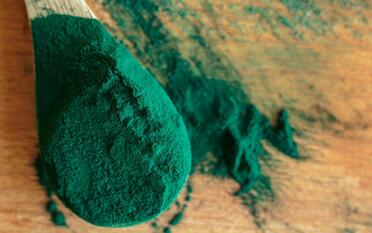


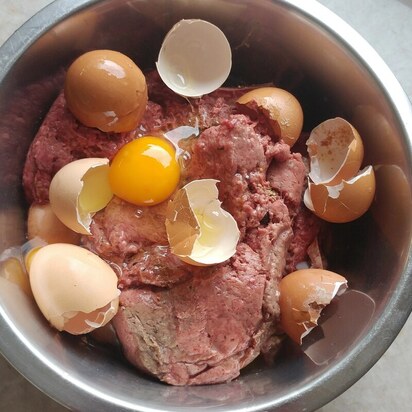










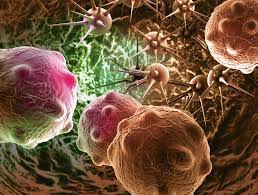
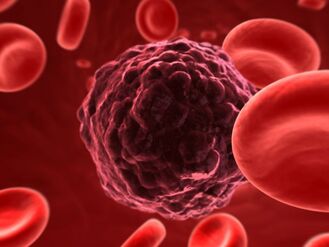
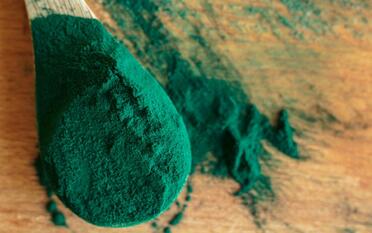
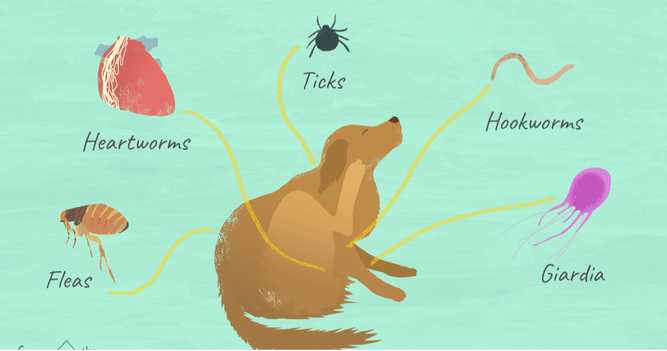
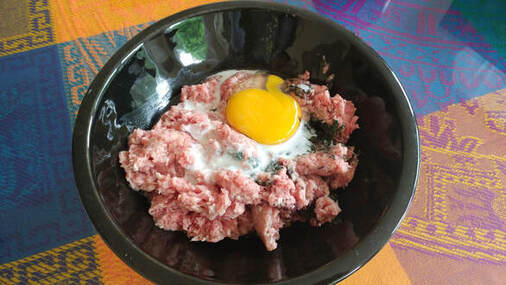

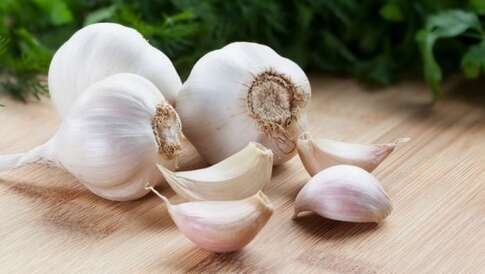
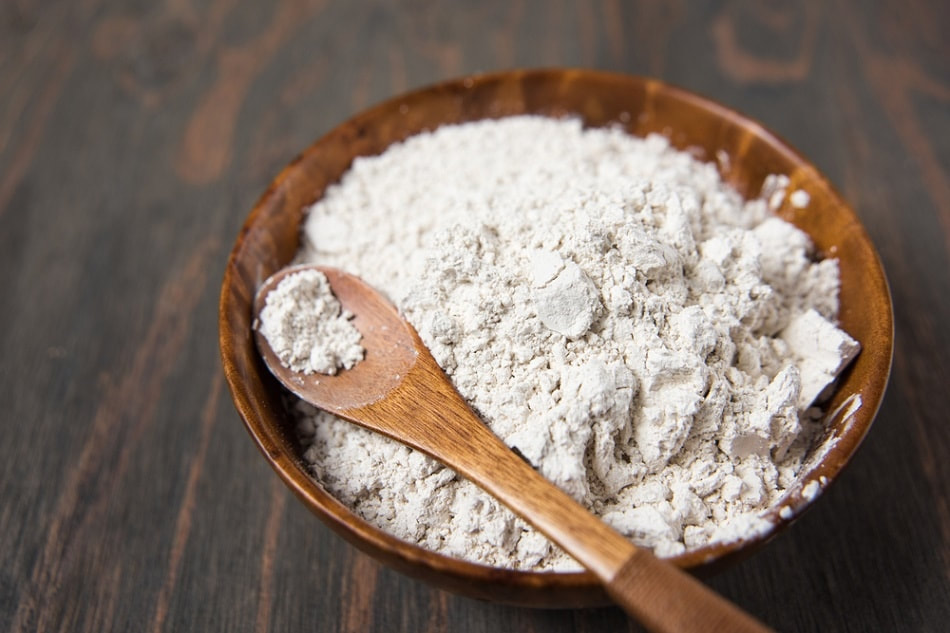
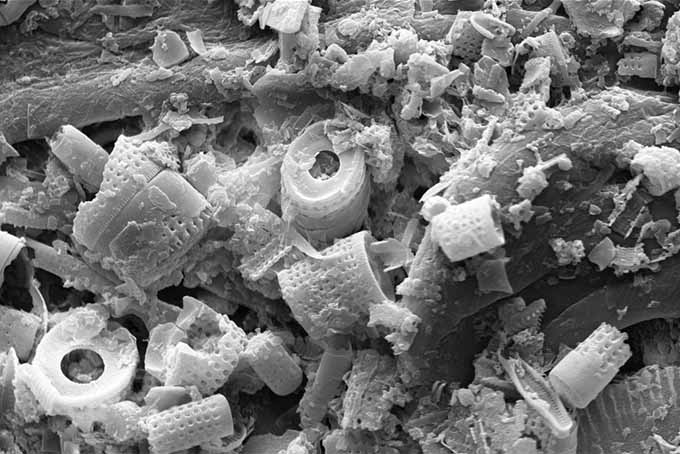
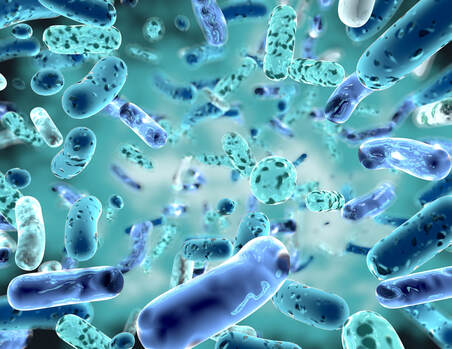
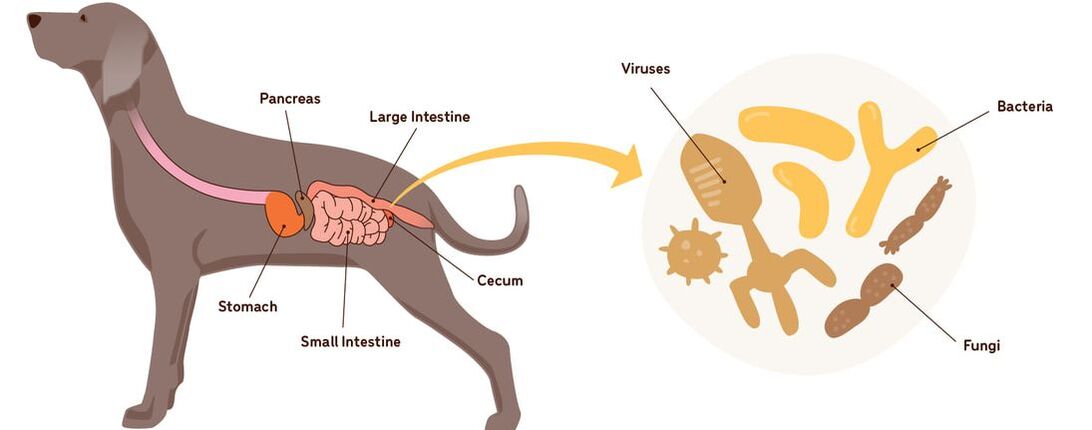
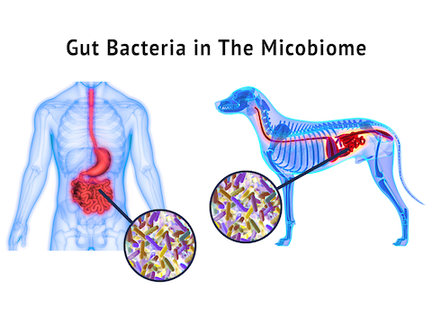

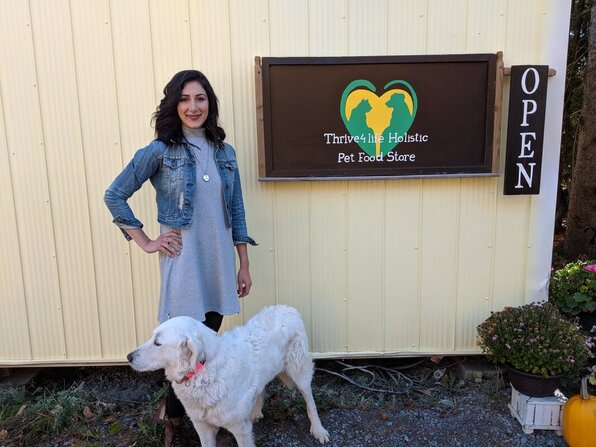
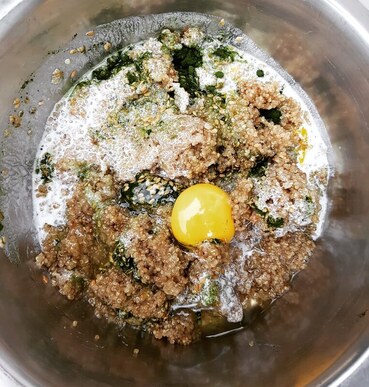
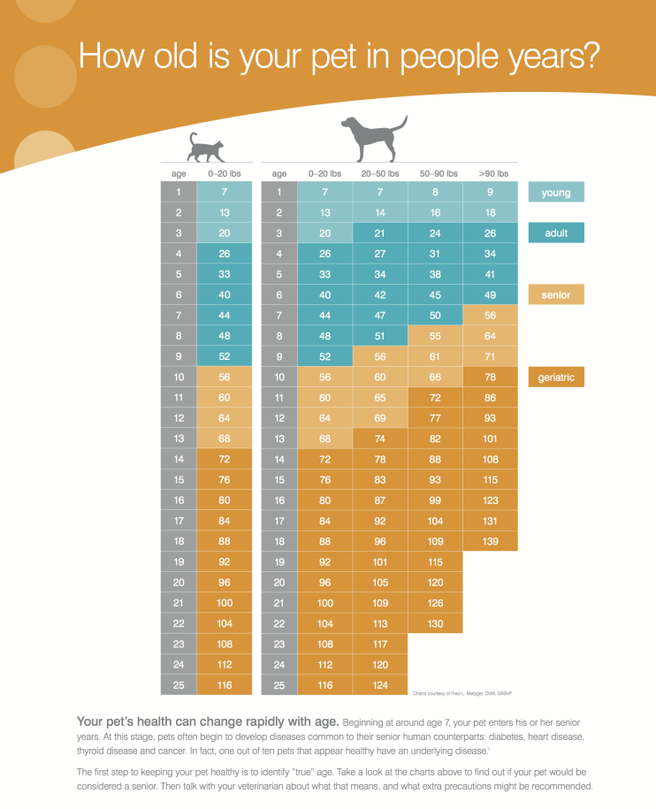
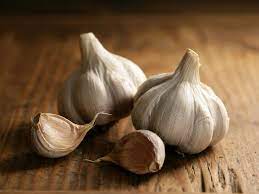

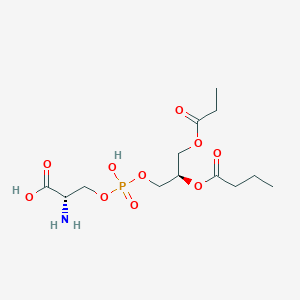
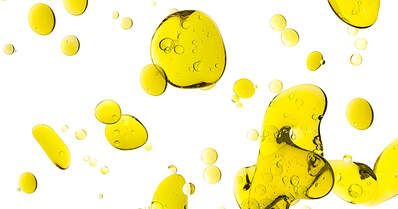

 RSS Feed
RSS Feed